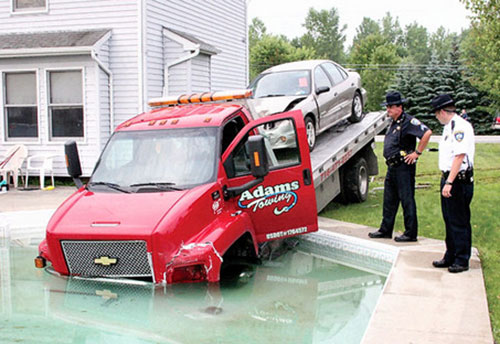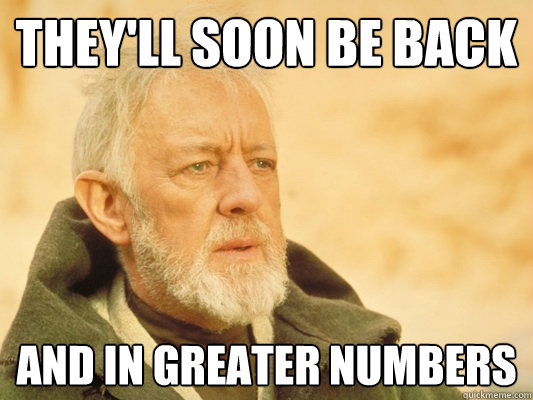
About two years ago, I and my colleagues tallied eight weeks of instructional time that went directly to summative assessments provided by the school, district, and state/Federal. We asked, and then begged, for a reasonable conversation and dialogue, but it fell on deaf ears. One test cost $8 per student, and I’m not sure we ever saw the results. Imagine you’re a doctor, you treat a patient, and then never know whether the treatment was effective. It’s kind of like the Schrödinger’s cat of education. Is the test alive, or dead? If you open the box and confirm it, you just killed the cat, jerk.
Well here in Washington State, we’re kind of in a cat box right now. (Not THAT kind of cat box, gross!) So many juniors did not take the SBA test, the data is invalid for those who did. Education writers around the country are discussing our state:
NEWSFLASH: Washington State on 2015 SBAC results: Never mind.
Going to pause right here: I, and many educators, experience fatigue when trying to explain the differences between the Common Core State Standards and their second cousins once removed assessments, SBAC and PARCC. And I’m not even sure how much of an emotional investment I feel about the SBAC: this isn’t about me. It never has been. It’s about students and their parents. What I am proposing is not a slog through the Swamp of Standardized Testing. As my son told me, it’s like Obi-Wan cautioning about Sand People:

So here we are. We can’t ‘inform instruction’ based on opaque and sullied samples. The data are corrupted and invalid. I propose a deep consideration and intentional conversation about portfolio assessments: no matter the grade, content area, or material/method of delivery, we create a meaningful assessment collection system* to truly see where children/students are, and where they need help. This will require concrete and focused PLC meetings, and time for teachers (hopefully in student cohort/cadre teams) to support student growth.
But you already knew that.
Much has been written about the worth of professional development: these news stories begin to hit the teacher media sites about this time of year, naturally. Seasonally this is the time when teachers go back to their buildings prior to school’s openings, and participate in a variety of ice-breakers, agenda items, and yes, some professional development. It’s a time to get to know new staff members, and introduce staff resources and reinforce bonds and make new allegiances. This summer I’ve been fortunate to participate in PD with two long-time colleagues, and am looking forward to a follow up PD this next week through the focus of close reading. The best PD always springs from two fields: it’s high-quality, and that usually means it costs money, or it’s from other teachers. Times when I’ve had coaches in my room have been best when the coach is well-trained, and asks me how my students are doing, and has honest conversations about my instructional choices, listens to my reflections and seeks understanding. The time when coaches came in my room and took over the lesson confused the students, (and me), and the conversation veered from my request to look over a close reading strategy to this taking over of the materials for that class. Enthusiasm sometimes gets the better of all of us, and we step on toes. I know my big size 10 feet have misstepped more than once while I’m learning the dance steps.
So if you’re in a position to provide leadership, or an educator in the classroom, two articles for your consideration:
Reimagining Classroom Walkthroughs
and
Ten Tips for Delivering Awesome Professional Development
This one is challenging for new administration teams, because they don’t know who knows what when –perhaps a survey before the in-service days is warranted?
6. Build on Existing Expertise
As a facilitator of learning, you don’t know everything and you don’t need to. When you’re planning, consider how to surface the expertise in the room and build on it. All of your participants, even brand new teachers, know something. Your job when delivering PD is figuring out how to connect new learning and content with what already exists, how to build on what people are bringing with them and already doing. Isn’t that a relief? You don’t need to know everything!
Yes: this began as a look at the data driven into a ditch, and turned into a call for solid professional development and instructional dialogue. This my attempt to wrap my head around what to do about it. It is going to take team-work, and sharing know-how. It’s clear to me that the ‘not knowing’ how to help students is our greatest concern, and we are reluctant to admit we’re not always experts. The best conversations I have are when we’re allowed to identify an issue and be frank about its possible resolutions. Argue the issue, not the personality.
And like Sand People, we startle easily, but we always come back.
*Postscript: my plan is to recreate and refine my data collection systems using portfolios, student reflection, and guidance–allow students to see the meaning of the work, and assess their skills and acuity.

